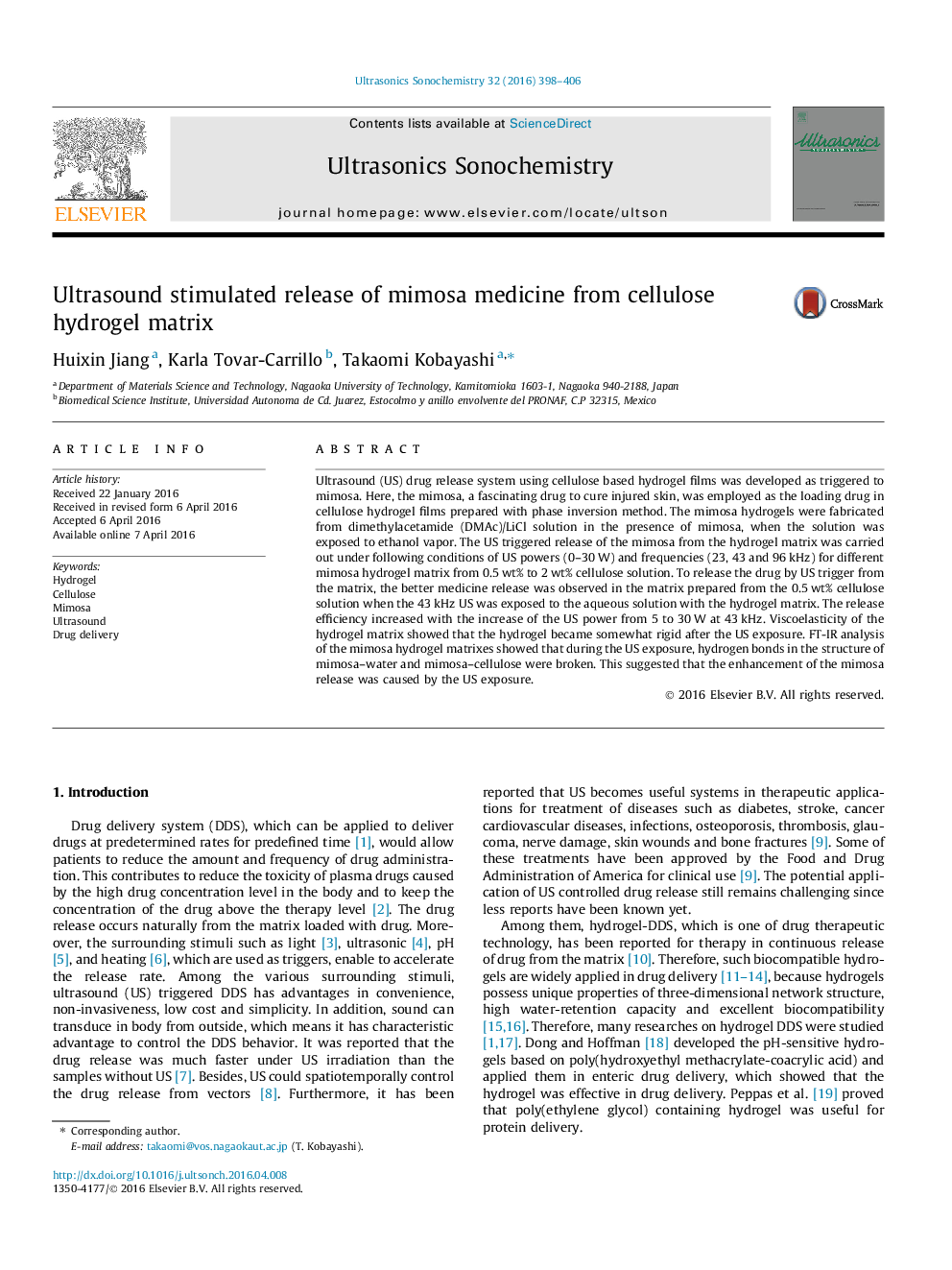| Article ID | Journal | Published Year | Pages | File Type |
|---|---|---|---|---|
| 1269477 | Ultrasonics Sonochemistry | 2016 | 9 Pages |
•Ultrasound (US) stimulated mimosa release from hydrogel matrix was studied.•The release efficiency of mimosa from hydrogel matrix increased 6 times.•US could promote the mimosa release by breaking hydrogen bonds.
Ultrasound (US) drug release system using cellulose based hydrogel films was developed as triggered to mimosa. Here, the mimosa, a fascinating drug to cure injured skin, was employed as the loading drug in cellulose hydrogel films prepared with phase inversion method. The mimosa hydrogels were fabricated from dimethylacetamide (DMAc)/LiCl solution in the presence of mimosa, when the solution was exposed to ethanol vapor. The US triggered release of the mimosa from the hydrogel matrix was carried out under following conditions of US powers (0–30 W) and frequencies (23, 43 and 96 kHz) for different mimosa hydrogel matrix from 0.5 wt% to 2 wt% cellulose solution. To release the drug by US trigger from the matrix, the better medicine release was observed in the matrix prepared from the 0.5 wt% cellulose solution when the 43 kHz US was exposed to the aqueous solution with the hydrogel matrix. The release efficiency increased with the increase of the US power from 5 to 30 W at 43 kHz. Viscoelasticity of the hydrogel matrix showed that the hydrogel became somewhat rigid after the US exposure. FT-IR analysis of the mimosa hydrogel matrixes showed that during the US exposure, hydrogen bonds in the structure of mimosa–water and mimosa–cellulose were broken. This suggested that the enhancement of the mimosa release was caused by the US exposure.
